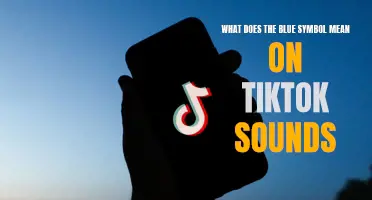
Rosh Hashanah, also known as the Jewish New Year, is a time of reflection, introspection, and renewal. It is a time when Jewish people come together to celebrate and honor the beginning of the High Holy Days. Central to this holiday are a myriad of symbols and their deep meanings that help to guide us through this meaningful period. From the sounding of the shofar, a powerful reminder of the ancient Jewish faith, to the round challah, symbolizing the cyclical nature of life, each symbol holds a unique significance and adds an extra layer of depth to the observance of Rosh Hashanah. Join us as we explore the rich symbolism and profound meanings behind these cherished symbols of Rosh Hashanah.
What You'll Learn
- What are some of the key symbols associated with Rosh Hashanah?
- What is the significance behind the shofar, and how is it used during Rosh Hashanah?
- How is honey used as a symbol during Rosh Hashanah?
- What is the role of apples and challah bread in Rosh Hashanah traditions?
- Are there any other symbols or objects commonly associated with Rosh Hashanah and what do they represent?

What are some of the key symbols associated with Rosh Hashanah?
Rosh Hashanah, which translates to "head of the year" in Hebrew, is the Jewish New Year. It is a time of reflection, prayer, and celebration for the Jewish community. Like many other Jewish holidays, Rosh Hashanah is rich in symbolism. These symbols help to deepen the meaning of the holiday and provide a visual representation of the themes and values associated with Rosh Hashanah.
Below are some of the key symbols associated with Rosh Hashanah:
- Apples and Honey: One of the most well-known symbols of Rosh Hashanah is the tradition of dipping apples in honey. This represents the hope for a sweet and fruitful new year. The round shape of apples is also significant, as it symbolizes the cyclical nature of time and the hope for a continuous cycle of blessings.
- Shofar: The shofar is a ram's horn that is blown during Rosh Hashanah services. It is a powerful symbol of the holiday and serves as a wake-up call for introspection and repentance. The blasts of the shofar are meant to awaken the soul and inspire individuals to reflect on their actions and strive for spiritual growth.
- Round Challah: Challah is a traditional Jewish bread that is often braided. However, during Rosh Hashanah, it is common to shape the challah into a round loaf. The round shape represents the cycle of life and is a reminder of the continuous nature of time. It also represents unity and the idea of coming together as a community during the holiday.
- Pomegranates: Pomegranates are another significant symbol of Rosh Hashanah. They are typically eaten during the holiday and are seen as a symbol of abundance, fertility, and mitzvot (good deeds). The many seeds inside a pomegranate are said to represent the numerous blessings that individuals hope to receive in the coming year.
- Fish: Fish is a common symbol associated with Rosh Hashanah. In Hebrew, the word for fish, "dag," sounds like the word "da'ag," which means worry. It is customary to eat fish during Rosh Hashanah as a way to symbolize the hope for a year free of worries and filled with happiness and prosperity.
- Tashlich: Tashlich is a symbolic act performed during Rosh Hashanah. It involves going to a body of water, such as a river or a lake, and casting off sins and negative actions by throwing small pieces of bread into the water. This ritual represents the desire to start the new year with a clean slate and the hope for forgiveness and atonement.
These symbols, along with many others, play a significant role in Rosh Hashanah celebrations. They add depth and meaning to the holiday, reminding individuals of the importance of introspection, repentance, and the desire for a sweet and fruitful new year.
Exploring the Symbolic Meaning of Killer Whales
You may want to see also

What is the significance behind the shofar, and how is it used during Rosh Hashanah?
The shofar holds great significance in Jewish tradition, particularly during the holiday of Rosh Hashanah, the Jewish New Year. For thousands of years, the shofar has been used as a powerful and symbolic instrument in Jewish religious services.
The shofar is a ram’s horn that is blown like a trumpet. It carries deep spiritual and historical meaning for the Jewish people, symbolizing both celebration and introspection. The most well-known story involving the shofar can be found in the Bible, when the Israelites marched around the city of Jericho and blew their shofars, causing the walls to come tumbling down.
During Rosh Hashanah, the shofar is blown as part of the religious service. It is blown a total of 100 times, according to Jewish tradition. The sounds of the shofar are considered to be a wake-up call to the soul, reminding individuals to reflect on their actions and repent for any wrongdoings. The shofar serves as a reminder of the divine presence and the opportunity for spiritual growth during the New Year.
The blasts of the shofar have different meanings and intentions. The three main sounds are tekiah, shevarim, and teruah. Tekiah is a long, solid blast, symbolizing the coronation of God as King. Shevarim consists of three short blasts, resembling sobbing or groaning, signifying repentance and remorse. Teruah consists of nine staccato blasts, representing both alarm and joy.
The shofar is blown by a trained individual, known as a ba’al tekiah. The blowing of the shofar requires skill and technique to produce clear and powerful sounds. The ba’al tekiah undergoes extensive training to ensure that the shofar is blown correctly during the religious service.
In addition to its importance during Rosh Hashanah, the shofar is also used during other Jewish holidays and significant events. It is blown during Yom Kippur, the Day of Atonement, to conclude the day of fasting and repentance. The shofar is also blown during the month of Elul, the month leading up to Rosh Hashanah, as a daily reminder to prepare for the upcoming High Holy Days.
The shofar holds a special place in Jewish tradition, serving as a reminder of the past and a call to action for the future. Its sounds inspire introspection, repentance, and renewal for the Jewish people during the holiday of Rosh Hashanah. The shofar’s powerful blasts resonate within the hearts of those who hear it, symbolizing the start of a new year and the opportunity for personal growth and spiritual connection.
Understanding Color Symbolism: A Comprehensive Koi Fish Color Meaning Chart
You may want to see also

How is honey used as a symbol during Rosh Hashanah?
Honey is a sweet and sticky substance that is often used as a symbol during the Jewish holiday of Rosh Hashanah. Rosh Hashanah, which means "head of the year" in Hebrew, is the Jewish New Year celebration. It is a time for reflection, introspection, and repentance as Jews prepare for the upcoming year.
One of the traditions during Rosh Hashanah is to dip slices of apple into honey and eat them. This act symbolizes the hope for a sweet and fruitful year ahead. Honey represents the sweetness of life and the prayers for a prosperous and joyful year. By eating honey-dipped apples, Jews are expressing their desire for a year filled with good health, happiness, and success.
The use of honey as a symbol during Rosh Hashanah can be traced back to biblical times. The land of Israel is often referred to as "the land flowing with milk and honey" in the Bible, emphasizing its fertility and abundance. Honey was considered a precious and valuable commodity in those times, and it was associated with prosperity and blessings.
In addition to dipping apples in honey, honey is also used in the preparation of many traditional Rosh Hashanah dishes. Honey cake, a dense and moist cake made with honey, is a staple during the holiday. This cake is often served as a dessert or a sweet breakfast treat during Rosh Hashanah meals. The use of honey in the cake symbolizes the desire for a sweet and satisfying year.
Honey is also used as an ingredient in other dishes, such as glazed carrots or honey-baked chicken. The sweetness of the honey complements the savory flavors of these dishes and adds a touch of richness and depth.
Aside from its symbolic significance, honey also holds religious importance in Judaism. In the Torah, it is mentioned as one of the seven species with which the land of Israel is blessed. These seven species, which also include wheat, barley, grapes, figs, pomegranates, and olives, are considered the main crops of Israel and are traditionally eaten during Rosh Hashanah.
In conclusion, honey is used as a symbol during Rosh Hashanah to represent the hope for a sweet and abundant year. By dipping apples in honey and incorporating it into traditional dishes, Jews express their prayers and wishes for a prosperous and joyful year ahead. The use of honey also holds religious significance, as it is mentioned in the Torah as one of the seven blessed species of the land of Israel. Overall, honey plays a central role in the symbolism and traditions of Rosh Hashanah, reminding Jews of the sweetness and blessings they hope to experience in the coming year.
Exploring the Deeper Spiritual Meaning Behind Rainbow Symbolism
You may want to see also

What is the role of apples and challah bread in Rosh Hashanah traditions?
Rosh Hashanah, the Jewish New Year, is a time of reflection, prayer, and celebration. It is a time to look back on the past year and make plans for the year ahead. As with many religious holidays, there are a number of traditions and customs associated with Rosh Hashanah. Two of the most well-known are the use of apples and challah bread.
Apples have a long history in Jewish tradition and are commonly associated with Rosh Hashanah. One of the most popular customs is to dip apple slices in honey. This sweet combination is meant to symbolize a sweet and fruitful year ahead. The apple itself is said to represent the Garden of Eden and is associated with the idea of renewal and new beginnings.
Challah bread, a type of traditional Jewish bread made with eggs, is another important element of Rosh Hashanah. The round shape of the bread is symbolic of the cyclical nature of time and the continuous cycle of the Jewish calendar. It also represents unity and the coming together of family and community.
During Rosh Hashanah, it is customary to eat round challah bread instead of the usual braided loaf. This is because the round shape represents the cycle of the year and the hope for a complete and wholeness in the coming year. The bread is often sweetened with raisins and sometimes sprinkled with sesame or poppy seeds.
In addition to its shape, the bread itself holds deeper meanings. The challah dough is made with intention and care, with each ingredient and step representing a specific purpose. The eggs represent fertility and life, while the flour represents sustenance and nourishment. The yeast, which makes the bread rise, is a symbol of growth and change.
During the Rosh Hashanah meal, it is customary to eat a piece of challah bread dipped in honey, just like the apple slices. This is another way of expressing the hope for a sweet and prosperous year ahead.
Overall, the use of apples and challah bread in Rosh Hashanah traditions holds deep symbolism and meaning. They serve as reminders of the cycle of life, renewal, and the hope for a sweet and prosperous year ahead. These traditions not only add flavor to the holiday celebrations but also connect individuals to their rich cultural and religious heritage.
Understanding the Symbol Dayz Icon Meanings: A Guide for Players
You may want to see also

Are there any other symbols or objects commonly associated with Rosh Hashanah and what do they represent?
Rosh Hashanah, also known as the Jewish New Year, is a joyous and solemn holiday that marks the beginning of the High Holy Days in the Jewish calendar. It is a time for reflection, repentance, and renewal. In addition to traditional customs and prayers, there are several symbols and objects associated with Rosh Hashanah that hold special significance.
One of the most recognizable symbols of Rosh Hashanah is the shofar, a ram's horn that is blown during the holiday. The sound of the shofar is meant to awaken the soul and inspire introspection. It is also a reminder of the biblical story of Abraham, who was willing to sacrifice his son Isaac as a test of his faith. At the last moment, a ram appeared and was ultimately sacrificed instead.
Another important symbol of Rosh Hashanah is the apple dipped in honey. This sweet treat is often consumed as a way to express hopes for a sweet and prosperous year ahead. The apple is traditionally associated with the Garden of Eden and the Jewish New Year is seen as an opportunity to reconnect with God and seek forgiveness for any wrongdoing, much like Adam and Eve did after being expelled from the garden.
Pomegranates are another symbol commonly associated with Rosh Hashanah. Known for their many seeds, pomegranates symbolize fertility, abundance, and good deeds. Their vibrant color and sweet taste also make them a festive addition to the holiday table.
Some families also have the tradition of including a fish head as part of the Rosh Hashanah meal. The fish head represents the head and not the tail, symbolizing the hope to be at the forefront of one's endeavors rather than trailing behind. It serves as a reminder to stay focused, make wise choices, and strive for leadership and success in the coming year.
Throughout Rosh Hashanah, it is also common to include round challah bread as part of the meal. The round shape represents the cyclical nature of life and the hope for a continuous cycle of blessings and happiness. It is often dipped in honey, further emphasizing the desire for a sweet year.
In addition to these symbols, other objects frequently associated with Rosh Hashanah include honey pots, Kiddush cups for the blessing over wine, and prayer books for reciting the special Rosh Hashanah liturgy.
As Rosh Hashanah approaches, these symbols and objects serve as reminders of the holiday's themes of introspection, renewal, and hope for a better future. They add a sense of tradition and symbolism to the celebrations, making Rosh Hashanah a truly meaningful and special time for Jewish communities around the world.
Understanding Arabic Symbols and Their Meanings
You may want to see also
Frequently asked questions
Apples and honey are often associated with Rosh Hashanah because they symbolize a sweet and fruitful new year. The apple represents a fresh start and renewal, while the honey represents the hope for a sweet and prosperous year ahead.
The blowing of the shofar, a ram's horn, is a central ritual of Rosh Hashanah. It is meant to wake up and stir the soul, as well as serve as a call to repentance. The shofar blasts remind individuals to reflect on their actions, seek forgiveness, and make amends for any wrongdoings.
The pomegranate is considered a significant fruit during Rosh Hashanah because it is believed to contain 613 seeds, which corresponds to the number of mitzvot or commandments in the Torah. It represents abundance, fertility, and righteousness. Eating pomegranates on Rosh Hashanah is a way to express the hope for a year filled with blessings and good deeds.
The round shape of challah bread during Rosh Hashanah symbolizes the cyclical nature of the year and the hope for a complete and full new year. The tradition of eating round challah bread also serves as a reminder of unity, as everyone who partakes in the meal forms a circle of togetherness and continuity.







